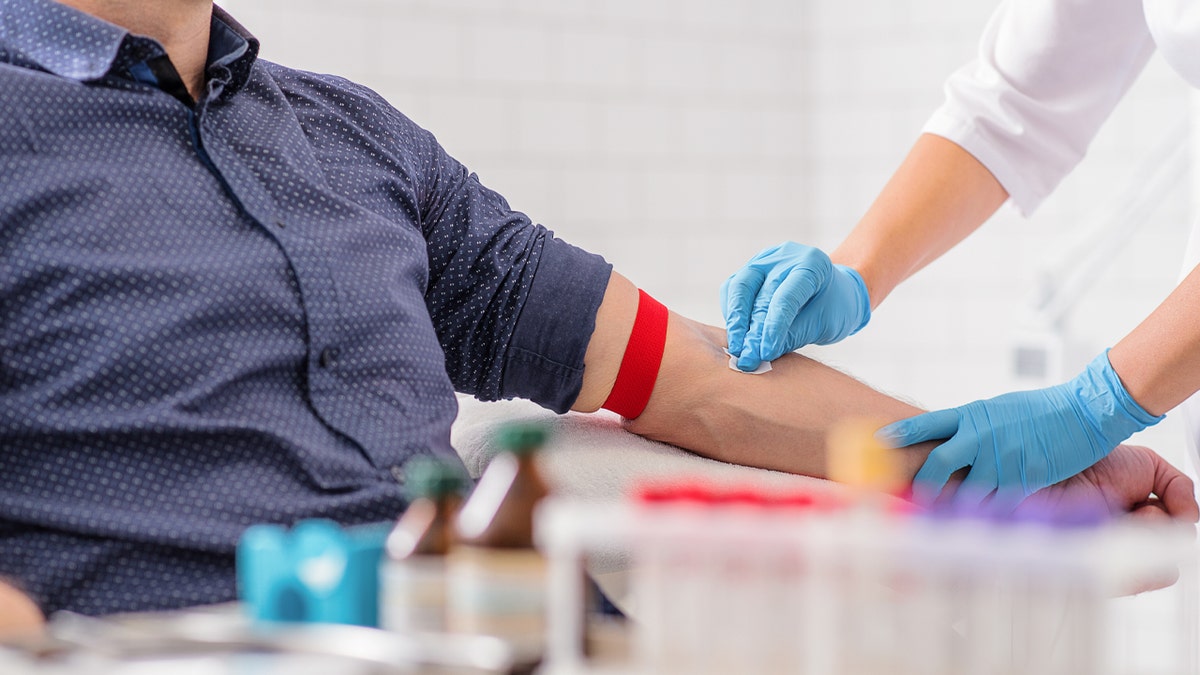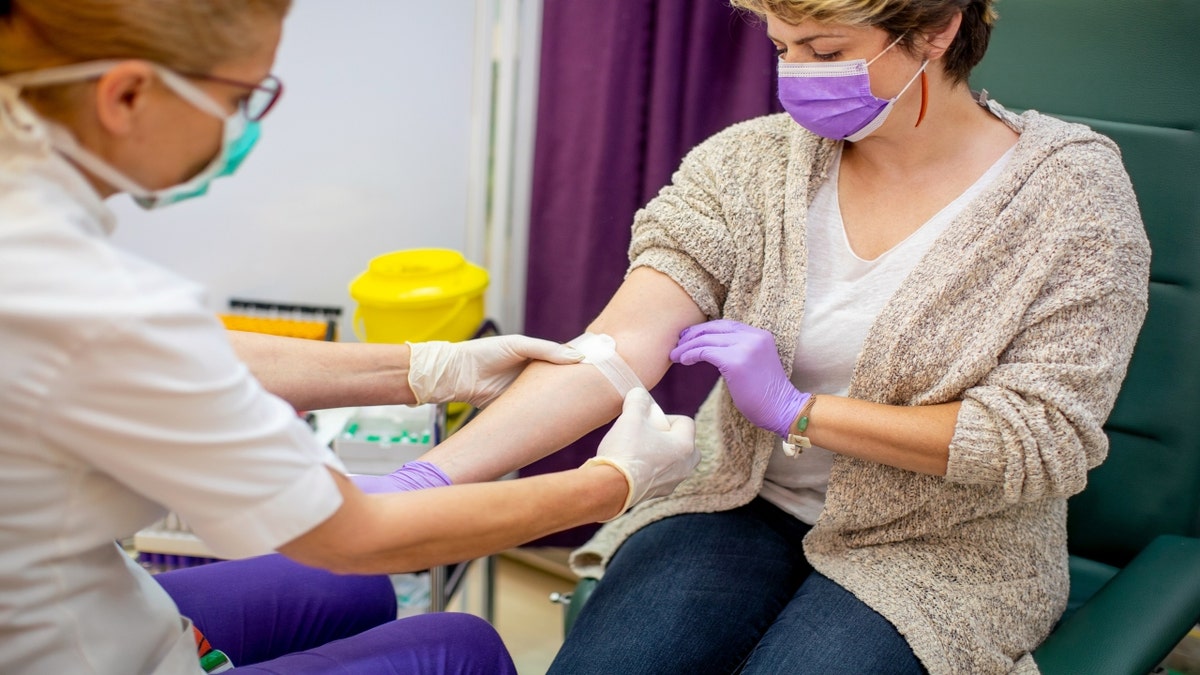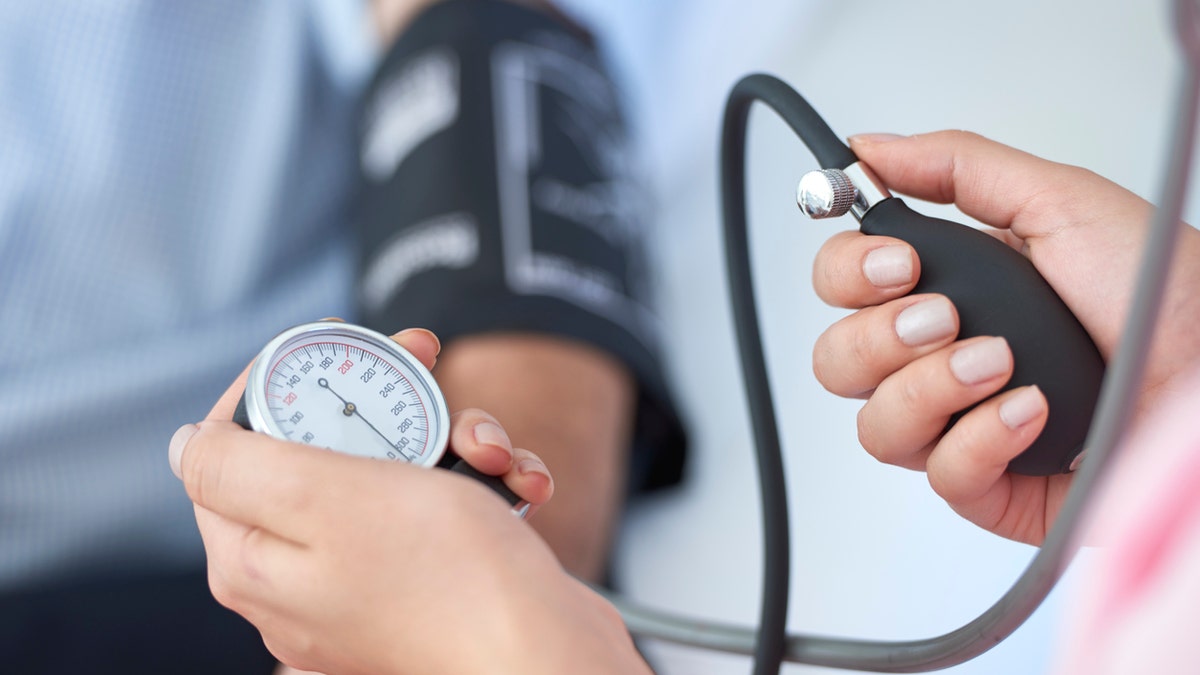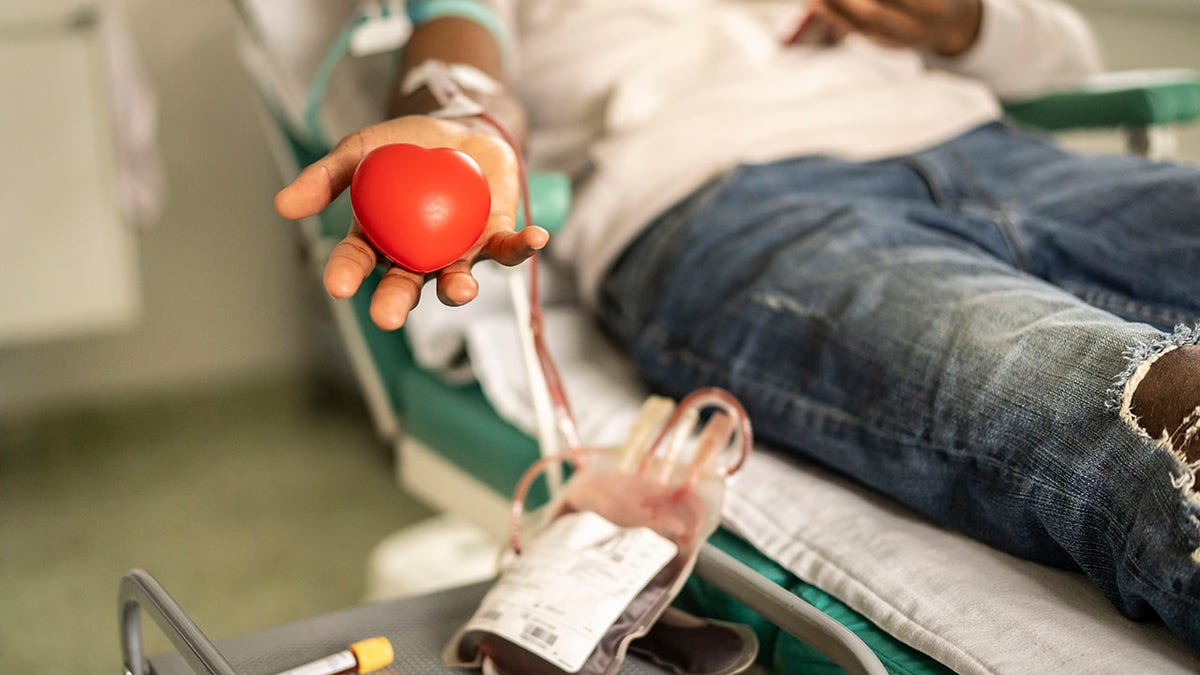Dr. Marc Siegel encourages Americans to get flu shot
Fox News medical contributor Dr. Marc Siegel previews the upcoming flu season and reacts to Dr. Fauci deflecting blame for pandemic school closures.
With winter on the horizon, health officials expect both influenza and COVID-19 cases to surge simultaneously — which can cause ripple effects in terms of fewer blood donations if many people become sick.
The American Red Cross is urging Americans not to forget to donate this fall and winter.
Health experts "warn 100 million Americans — equivalent to nearly a third of the country’s population — could get COVID-19 infections in the coming fall and winter," Dr. Baia Lasky, medical director of the American Red Cross in Atlanta, Georgia, told Fox News Digital.
EARLY, SURPRISING SURGE OF RSV HAS HOSPITALS, MEDICAL CENTERS CONCERNED
She emphasized, "That’s why the Red Cross is reminding people: Remember to donate, even after you vaccinate."
Yes, that's right: Patients are still eligible to donate after getting a flu or COVID-19 vaccine.

Blood cannot be stockpiled, so the country needs a supply of new and ongoing blood donations, including throughout the winter. (iStock )
"As long as you are healthy, feeling well and symptom-free at the time of donation, you can give lifesaving blood," Lasky said.
And after getting vaccinated, there’s no waiting period before donating.
CDC DIRECTOR TESTS POSITIVE FOR COVID-19 IN REBOUND CASE
Blood cannot be stockpiled, so natural disasters, severe weather and seasonal illnesses in the wintertime — as well as vacation activities — can threaten the blood supply.
Blood types
Blood transfusions are one of the most common procedures done in the hospital, said Dr. Lasky. One in seven patients entering the hospital requires a transfusion.
People don’t need to know their blood type to donate blood, but giving blood allows a convenient way for health experts to discover a donor's blood type.
"After donation, donors will be notified of their blood type when they receive their blood donor card or by creating a profile on the Red Cross Blood Donor App," Lasky said.
"Donors will be notified of their blood type when they receive their blood donor card or by creating a profile on the Red Cross Blood Donor App."
All blood has the same general components — but everyone’s blood is not the same, per the American Red Cross.
Blood types are divided into four main groups by the presence or absence of two antigens called A or B on the red blood cells.

The blood type and whether someone is Rh-positive or negative determine eight possible blood classifications: A positive, A negative, B positive, B negative, O positive, O negative, AB positive and AB negative, the American Red Cross noted. (iStock)
They are further subdivided by the presence or absence of a protein on the red blood cells known as rhesus factor, according to Healthline.
"The Rh factor is the positive or negative factor of your blood type," Lasky said.
"Each person has an ABO blood type — either A, B, AB, or O — which means antigen A, antigen B, both antigens (type AB), or neither antigen (type O) is found on their blood cells," according to the American Red Cross’s website.
FOODS THAT CAUSE HEADACHES: CHOOSE YOUR CHEESE, WINE, COFFE AND CHOCOLATE CAREFULLY
"Each person also is either Rh-positive or Rh-negative" — meaning, you either have Rh or you don’t.
The blood type and whether someone is Rh-positive or negative determine eight possible blood classifications: A positive, A negative, B positive, B negative, O positive, O negative, AB positive and AB negative, the American Red Cross noted.
It’s important to have a supply of all types of blood to meet the needs of all kinds of patients.
"Those with an Rh positive type can receive blood from donors who are Rh positive or negative types," Lasky said.
"However, those with an Rh negative type can only receive blood from donors with an Rh negative type."
BREAST CANCER PATIENTS WHO RESPOND WELL TO PRE-SURGICAL TREATMENT MAY BE ABLE TO SKIP SURGERY: STUDY
So it’s important to have a supply of all types to meet the needs of all kinds of patients, she added.
"Approximately 45 percent of Caucasians are type O (positive or negative) — but 51 percent of African Americans and 57 percent of Hispanics are type O," Lasky noted.

A nurse takes a patient's blood pressure. Donors are given a "mini-physical" before they donate blood — they'll have their temperature, pulse and blood pressure checked. (iStock)
A recipient’s blood type must be "matched" with a donor to make sure the transfusion does not cause an adverse reaction to the patient, per Healthline.
If a patient’s blood transfusion is not matched correctly, the recipient’s immune system might recognize the donor’s red blood cell antigens as "foreign" and create antibodies against these donor blood cells, Healthline added.
A STRESSFUL MARRIAGE MAY HARM YOUR HEART HEALTH, STUDY FINDS
So when doctors order a "type and cross" before a blood transfusion, they are confirming before the transfusion that the patient’s and donor’s blood are compatible to prevent a potentially life-threatening reaction.
Universal donor
O negative blood does not have any antigens on red blood cells, so it does not cause any immune response when transfused.
This blood type is very useful when there’s an emergency and no time to test the donor’s blood for compatibility, Lasky said.
The most transfused blood type is type O positive blood, in part because of its role in emergency transfusion.
People who are O negative blood type are known as "universal donors," as their blood can be used in red blood cell transfusions for any blood type, she added.
But only 7% of the population is O negative, Lasky said.
The most transfused blood type is type O positive blood, in part because of its role in emergency transfusion and because it’s the most frequent occurring blood type with 37% of Americans in the U.S. population.
CHRISTMAS IN NOVEMBER? PEOPLE REVEAL THE MOST AWESOME LIFE ‘GIFTS’ AHEAD OF THE HOLIDAYS
"Donors with type O blood types (O negative and O positive) are often needed because their blood plays an important role in emergency transfusion," Lasky noted.
"These crucial blood types are often the first to reach emergency levels during blood shortages."
Common concerns about donating
Many people are not sure if they are eligible, but most people can donate if they are in good health, even if they have a chronic condition, according to the American Red Cross.
Donors should be at least 17 years old, but some 16-year-olds may donate with their parents’ permission in certain states.

A male donor is shown in a blood donation clinic holding the heart-shaped ball often used during blood donations. (iStock)
Individuals should be at least 110 pounds. There are additional weight requirements for those 18 and younger and all high-schoolers.
Some people are afraid of needles, but some helpful tips to overcome this fear are focusing on the good you're doing when donating; being prepared to know what to expect; and relaxing by listening to music, reading a book or talking to staff, according to the American Red Cross.
HEALTHY LIVING MEANS STAYING ACTIVE INDOORS DURING THE COLD WINTER MONTHS
Donors will also receive a "mini-physical" before donating blood. This ensures they're healthy enough; they'll have their temperature, pulse and blood pressure checked.
The donor’s hemoglobin is also checked to make sure his or her blood levels are in a safe range before donating.
Focus on the good you're doing when donating blood.
"Most donors feel fine after donating blood, but if you do feel faint or fatigued, simply lie down until you feel better," the American Red Cross advised on its website.
Approximately one pint of blood is donated per visit.
"Your body can replenish that loss in a short time," said the American Red Cross — it's "a matter of hours for some components, a few weeks for others."

For anyone interested in donating blood during a time of urgent need, the American Red Cross offers key information on its website (redcrossblood.org) and app. "By simply entering your zip code, a list of blood drives will populate, connecting you to a location and date most convenient" for donation, the organization told Fox News Digital. (iStock)
The time it takes to donate is relatively short, but the American Red Cross recommends planning on an hour for the appointment.
"You can donate whole blood as often as every 56 days up to six times a year," the organization noted on its website.
What makes someone unable to donate?
"There are a number of things that might make you ineligible to donate blood temporarily or indefinitely," Lasky said.
"Current illness, international travel, iron level and medications you might be taking can sometimes cause an individual to be ineligible to donate blood."
CLICK HERE TO GET THE FOX NEWS APP
She said that anyone who may be deferred for donating "try to donate again at another time."
How to make an appointment to donate
If you want to find out where to make a donation appointment, visit the site redcrossblood.org, Lasky told Fox News Digital.
"By simply entering your zip code, a list of blood drives will populate, connecting you to a location and date most convenient for the donor," she added.
CLICK HERE TO SIGN UP FOR OUR LIFESTYLE NEWSLETTER
"Downloading the Red Cross Blood app is a simple and easy way to schedule and manage appointments," she said — as well as "follow your blood donation's journey every step of the way as it makes its way to a hospital to help patients in need."


